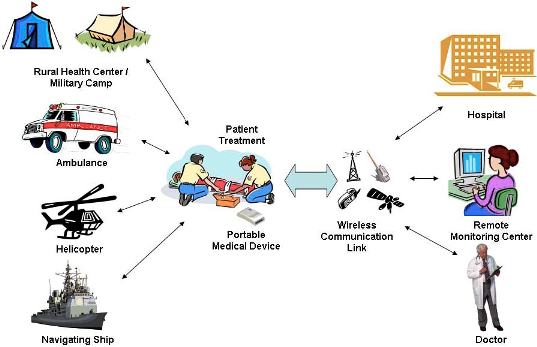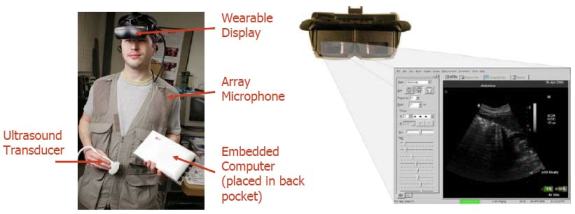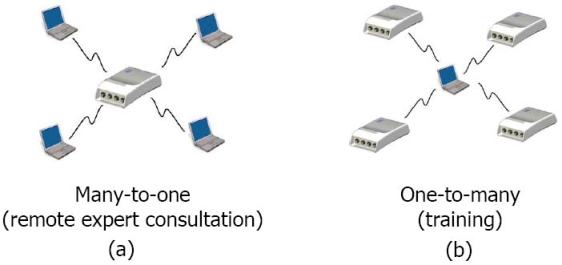This work evaluates the feasibility of real-time wireless video streaming of medical ultrasound signals over 802.11g ad-hoc and 3G cellular broadband networks for disaster relief, rescue, and medical transport applications. Scalable H.264 encoded echocardiographic ultrasound image sequences were transmitted in real-time at specified image resolutions (VGA and QVGA) and frame rates (10, 15, 20, and 30 frames per second). Relevant transmission parameters such as data rate, packet loss, delay jitter, and latency were measured. The 802.11g network permits high frame rate, VGA resolution, has low latency and jitter, but is suitable only for short communication ranges, while the 3G cellular broadband network allows medium to low frame rate streaming at QVGA image resolution with medium latency. However, video streaming can take place from any location with 3G service to any other site with Internet connectivity. Physicians with expertise in medical ultrasound subsequently rated the diagnostic content of the transmitted videos relative to the original ultrasound video signals. The physicians observed that the image quality in the case of both 802.11g and 3G wireless transmission was fully to adequately preserved, while missed frames could momentarily decrease the diagnostic value. This research demonstrates that sufficient wireless bandwidth and efficient video compression make diagnostically valuable wireless streaming of ultrasound video feasible.

Figure 1. Emergency Care Applications of Telemedicine.
Emergency health care is a newer, but very applicable field for telemedicine. Some common applications involving telemedicine and emergency health care services are illustrated in Figure 1. These can take the form of sending critical patient information to a hospital, a doctor or a remote monitoring center, regardless of the actual location of the patient, e.g., in an ambulance, a helicopter, a ship or in a rural health center. Such patient critical information may consist of physiological data, visual and ultrasound video and still imaging data, along with two-way voice communication.
As major goal of this research, an ultra-portable, reconfigurable, and wearable wireless ultrasound system has been developed that brings advanced medical diagnostic techniques out of the hospital and onto a battlefield or a disaster site. The battery-powered system has been field-tested and approved by the US Army. The system is integrated into a wearable vest and features a wearable display and a voice operated control, as shown in Figure 2 below.

Figure 2. Vest configuration of the ultrasound system.
With the built-in wireless and remote viewing capabilities the mobile ultrasound system allows for the scenarios of (i) multiple receivers observing a single imaging session (useful for training purposes) and (ii) one receiver observes multiple imaging sessions (useful for remote expert consultation), as illustrated in Figure 3.

Figure 3. Advanced imaging sessions via the mobile ultrasound system: (a) Many-to-one (expert consultation) and (b) One-to-many (training).
The wireless streaming performance of the system, as described on the beginning, has been presented as part of the special session on Multimedia and Signal Processing in Telemedicine at the MMSP 2009 workshop. The technology behind the mobile ultrasound system has been patented and is at the stage of being commercially developed through our start-up company ImagiSonix, Inc.